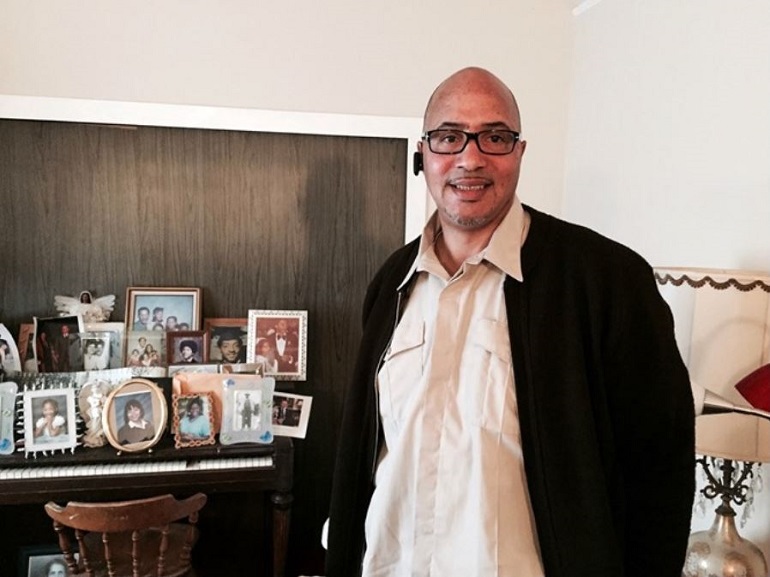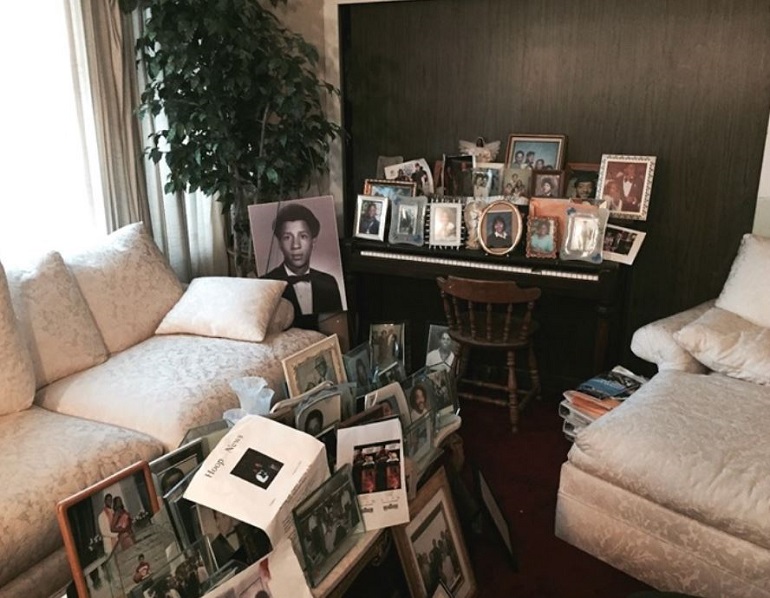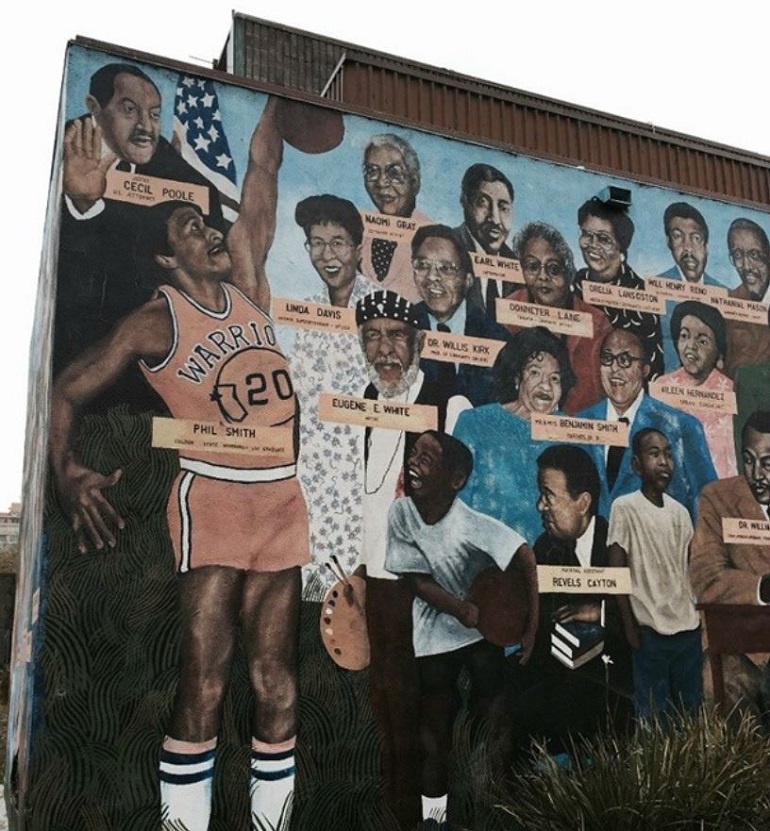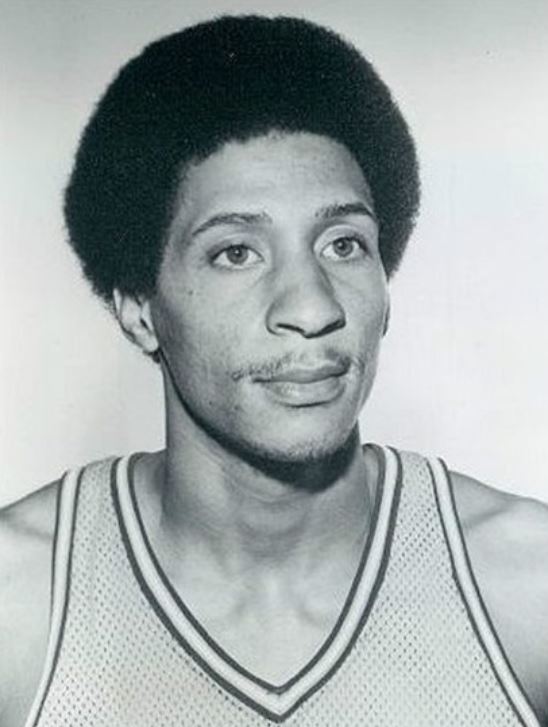Matthew Smith, in his father’s home in Cole Valley.
Twenty-seven year Muni employee Matthew Smith speaks in soft, even tones as he reflects on life with older brother Phil — “Philip” as he refers to him reverently — a standout shooting guard on the Golden State Warriors 1975 NBA Championship team.
An evening “yard starter” at Muni’s Potrero Division, it’s Matthew Smith’s job to make sure that buses are ready to roll and leave the yard on time during his 11 a.m. to 7 p.m. shift. The eighth of nine children born to Benjamin and Thelma Smith, Matthew Smith has seen several constants in his life: Muni, basketball and family.
Patriarch Benjamin Smith Sr. was a Muni operator for nearly 20 years, and seven of the nine Smith children worked at Muni. Though most of the Smiths are now retired, brother Steven still works out of Muni’s Woods Division.
It was basketball that kept Matthew Smith and his brothers on the straight and narrow. Basketball, and parents determined to see their children succeed despite the pitfalls that ruled the inner city streets of the Fillmore District in the 1970s, where the Smith boys spent most of their childhood years.
“We were real close knit,” Matthew Smith said during an interview at his familial home in Cole Valley in December. “We used to have the key to Hamilton Gymnasium on Geary and Steiner. One of our friends used to work there and my brothers Phil, Stevie, Mark and I, would go in there after the gym was closed at about 11 o’clock every night and stay there until about four or five o’clock in the morning just playing ball.”
This year’s Golden State Warriors, led by shooting phenom Steph Curry, went on a record-setting tear that would eventually land them in the NBA playoffs for the second year in a row. We were curious to know what life was like in the Smith household during Golden State’s 1975 championship season from the perspective of an admiring younger brother with his older sibling on the team. Somehow, the story ended up taking a different path.
The Smith family history is clearly in evidence at the Smith’s Cole Valley home. A photo of Phil Smith rests under the tree next to the family piano.
An Overwhelming Sense of Family
The Smith family home is a shrine. It is a shrine that is — surprisingly — not overpowered by mementos of NBA superstar Phil (though a special set of trophy cases is needed to hold Phil’s bounty of awards). Instead, the home is awash with memories and photos of virtually each and every one of Benjamin and Thelma Smith’s nine children, their grandchildren and their great grandchildren.
Though some of the photos and memorabilia are a bit dog-eared and have yellowed with age, they remain on display in every corner of the Smith family home, as if to reflect a clear statement of purpose: This house is about family.
Sprinkled amongst the photos you’ll find a number of pieces of Muni memorabilia — a “Hoop News” Muni flier from 2002 featuring brothers Matthew and Steven Smith (when Muni had its own basketball league), and assorted Safe Driver Award brochures. It seems Muni, in turn, played an integral role in the Smith family’s livelihood.
On-court superstar
Former University of San Francisco All-American Phil Smith played nine seasons in the NBA with the Golden State Warriors, the San Diego Clippers and the Seattle SuperSonics. In his nine years in the NBA, Phil Smith averaged 15.1 points per game and was named to the NBA all-star team in 1975 and 1976. A ruptured Achilles tendon suffered in 1979 would cut short a promising career. “Without the Achilles issue,” former Warriors Coach Al Attles said, “[Phil Smith] would have gone on to become one of the greatest players in NBA history.”
At age 46, Phil Smith was diagnosed with multiple myeloma cancer. Doctors told him that only about three people in a million acquire the disease, usually the elderly. “He tried hard to fight it,” Matthew Smith said. “He went through all the different treatments: stem cell treatments, a bone marrow transplant. His cancer went into remission, but then it came back worse.”
After a valiant four-year battle, Phil Smith died on July 29, 2002. “My mom was really torn up,” Matthew Smith said. “All of us were.” Later that year, then-Mayor Willie Brown proclaimed Sept. 27 “Phil Smith Day” in San Francisco. Thelma Smith passed away three years later.
A brother’s memories
By all accounts, Phil Smith was a down-to-earth guy; a man who eschewed the glitz and glamour of fame for the solace of family.
“Phil was a real quiet, gentle spirit. He was just a real down-to-earth guy who kept to himself,” Matthew Smith said. The younger Smith smiles as he points to Phil’s wedding picture with wife Angela, taken in the summer of ’75 after the Warriors swept the Washington Bullets for the NBA Championship.
“At his wedding he feinted at the altar,” Matthew Smith says with a chuckle. “We loosened his tie — which wasn’t that tight, and I asked him ‘Why did that happen to you?’ My brother said ‘Everything flashed in front of me.’”
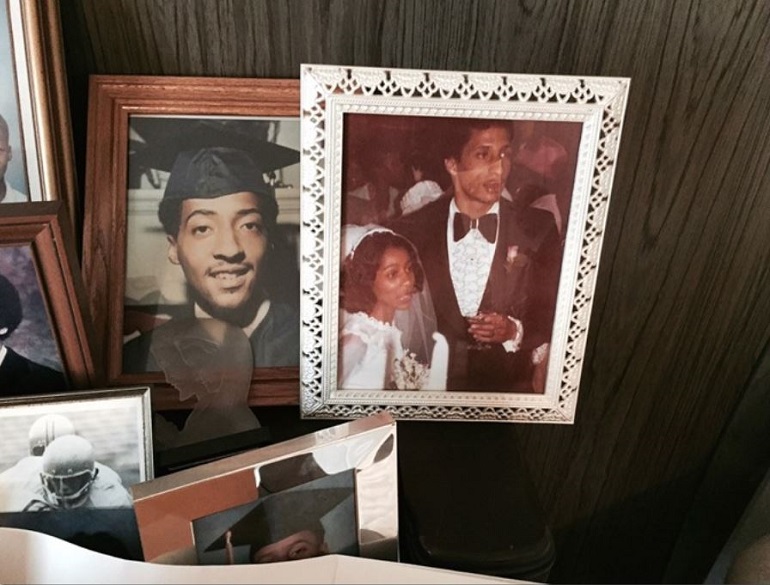
Phil and Angela Smith’s wedding photo atop the family piano.
During his professional basketball career, Phil Smith shared the hardwood with NBA royalty. He played alongside alpha dog teammate Rick Barry and rookie sensation Jamaal (Keith) Wilkes, and brushed shoulders in battle with Walt Frazier, Earl Monroe, John Havlicek, Kareem Abdul-Jabaar, “Pistol Pete” Maravich and Elvin Hayes.
“I didn’t know him to pal around with anyone on the team or in the league. He always wanted to hang out with us. He was about family. He loved his family more than anything.”
Family values
Those family values were instilled by parents who made tremendous sacrifices for their children, sacrifices that were recognized — and memorialized — by the Fillmore community.
The Ella Hill Hutch Community Center on Webster and McAllister features a mural of community members who have left an impact on The Fillmore District. Along with Pastor Cecil Williams from Glide Memorial Church, Justice Cecil Poole and other community leaders, the mural features a larger than life portrait of Phil Smith. It also features portraits of Benjamin and Thelma Smith.
“It was their mission to see their children succeed and overcome the obstacles presented here in the neighborhood,” said Victoria Botts, with the Ella Hill Hutch Center. Botts and volunteer Alexis Hubbard collaborated on a report documenting the history of the Ella Hill Hutch Center.
“[The Smiths] believed in community and were highly regarded in the neighborhood,” Hubbard said. “They were outspoken as to the importance of education and did everything in their power to ensure their children succeeded academically.”
Phil Smith (far left) and parents Thelma and Benjamin Smith (to the right, in blue).
No Warrior connection
Though Benjamin Smith Sr. remained in contact with Warriors Coach Al Attles for years after Phil’s passing, the Smiths have since lost contact with the Warrior organization. Still an avid basketball fan, Matthew Smith admits he hasn’t attended a Warriors game in years.
By the end of our conversation, it was evident that Matthew Smith’s memories of his brother Phil were not as Phil the NBA star, but as Phil the beloved big brother. A brother who shared Matthew’s love of fishing. A brother who would invite him to pick-up basketball games that included singer Marvin Gaye. A brother who, during the holidays, would eat one of his mom’s lemon icebox pies all by himself.
Exiting the Smith family home, it was clear what this story was about. It was about two guys who loved each other’s company, two guys who reaped the benefits of a strong upbringing.
Two guys who clearly understood that family ties are the ties that bind.
Phil Smith in 1975. (Photo: Wikipedia)
